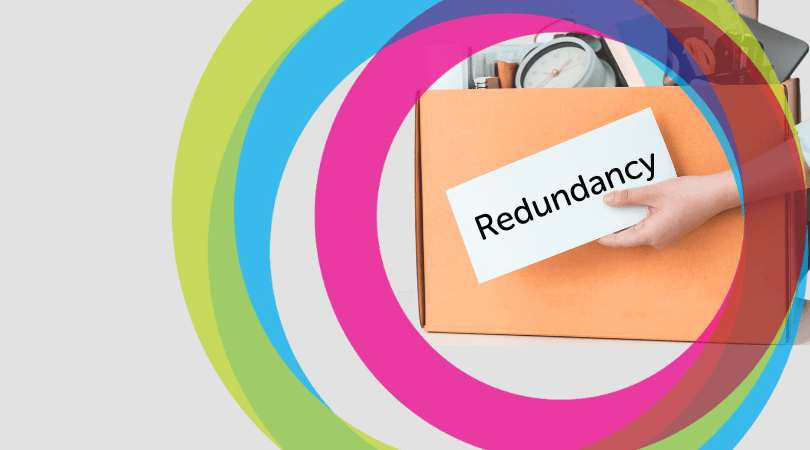Who Pays Redundancy Money? Comprehending Company Responsibilities in the UK
Who Pays Redundancy Money? Comprehending Company Responsibilities in the UK
Blog Article
Exploring the Operational Characteristics of Business Redundancy and Its Long-Term Sustainability

Redundancy Strategies for Service Continuity
In order to make certain nonstop procedures, businesses have to execute efficient redundancy methods for company connection. Redundancy in this context refers to the replication of essential components or functions within a system to minimize the impact of prospective failings. By integrating redundancy strategies, organizations can improve their durability against disturbances brought on by various aspects such as all-natural disasters, devices failings, or cyber-attacks.
One usual redundancy approach is the implementation of back-up systems and information storage space solutions. This involves producing matches of important data and systems that can be triggered in situation of a primary system failing. In addition, companies can develop redundant interaction channels and source of power to maintain connectivity and operations during unexpected events.
Furthermore, cross-training workers to perform multiple roles within the company can act as a beneficial redundancy technique. If vital personnel are unavailable due to illness or various other factors, this makes sure that necessary tasks can still be carried out also. Generally, efficient redundancy techniques are important for companies to copyright functional connection and reduce the impact of potential disturbances.
Effect of Redundancy on Organizational Durability
Offered the critical function redundancy strategies play in ensuring business continuity, discovering the effect of redundancy on business resilience ends up being essential for comprehending the all natural functional dynamics of a company. Redundancy, when tactically carried out, can significantly add to enhancing an organization's durability in the face of unforeseen obstacles.
In addition, redundancy can foster development and creativity within an organization as staff members feel empowered to take calculated threats, understanding that there is a safety net to support them in case of failing. Generally, the impact of redundancy on business resilience is extensive, shaping the long-lasting sustainability and success of a company.
Stabilizing Performance and Flexibility in Redundancy
Accomplishing a harmonious balance between functional effectiveness and adaptive versatility is a critical challenge in the critical implementation of redundancy within companies. Effective operations are essential for keeping productivity and cost-effectiveness, ensuring that sources are used optimally. Nevertheless, excessive focus on performance alone can cause rigidity, making it tough for organizations to adapt to unexpected adjustments or difficulties. On the various other hand, flexibility enables companies to respond nimbly to developing circumstances, promoting technology and durability. Yet, excessive adaptability without a strong operational foundation can lead to inefficiencies and variance.
To balance performance and flexibility in redundancy planning, organizations need to very carefully assess their operational requirements, market dynamics, and calculated goals. Applying lean practices can improve performance by streamlining procedures and getting rid of waste, while cultivating a society of flexibility and continual improvement can boost flexibility. Additionally, investing in cross-training programs and durable communication channels can aid grow a functional labor force qualified of handling varied jobs during durations of transition. Ultimately, locating the appropriate balance in between performance and versatility is vital for developing a sustainable and resilient company despite uncertainty.
Long-Term Sustainability With Redundancy Preparation
To ensure long-lasting feasibility and security, companies must tactically straighten their redundancy planning with long-lasting sustainability objectives, thereby balancing operational performance with flexible adaptability. Companies from this source ought to see redundancy not as a responsive solution to immediate problems but as an aggressive strategy for lasting success.

Positive Procedures for Lasting Company Workflow
Just how can companies proactively enhance their functional sustainability for lasting success? Implementing positive actions is important for companies aiming to make sure lasting procedures. click here for info One key approach is to buy innovation and advancement to simplify procedures, lower waste, and remain affordable in the market. Embracing sustainable practices such as reducing energy consumption, reducing carbon footprint, and enhancing source utilization can not only benefit the environment but additionally cause cost financial savings in the long run.
Additionally, cultivating a society of constant improvement and discovering within the company can boost flexibility to altering market conditions and customer demands. Motivating worker involvement in decision-making procedures and giving possibilities for specialist advancement can increase spirits, performance, and general performance. Establishing clear objectives, keeping an eye on crucial performance signs, and regularly evaluating progression are important components of positive sustainability administration.
Working together with suppliers, consumers, and other stakeholders to advertise sustainable techniques throughout the supply chain can produce a causal sequence of positive influence - redundancy pay if company goes bust. By taking positive steps in the direction of operational sustainability, firms can build strength, drive innovation, and safeguard their long-term success in an ever-evolving organization landscape
Conclusion

In the world of organizational management, the critical deployment of company redundancy stands as a crucial yet complex practice that demands a fragile balance in between operational performance and long-lasting stability. By exploring the operational characteristics that underpin business redundancy and evaluating its more comprehensive implications for organizational strength and versatility, a nuanced understanding read this post here of how redundancy approaches can shape the future trajectory of a firm begins to unfold.Offered the vital role redundancy methods play in ensuring organization continuity, discovering the impact of redundancy on business resilience ends up being crucial for understanding the holistic functional characteristics of a company. In general, the effect of redundancy on business durability is profound, forming the long-lasting sustainability and success of a company.
In final thought, recognizing the functional dynamics of company redundancy is essential for ensuring long-term sustainability.
Report this page